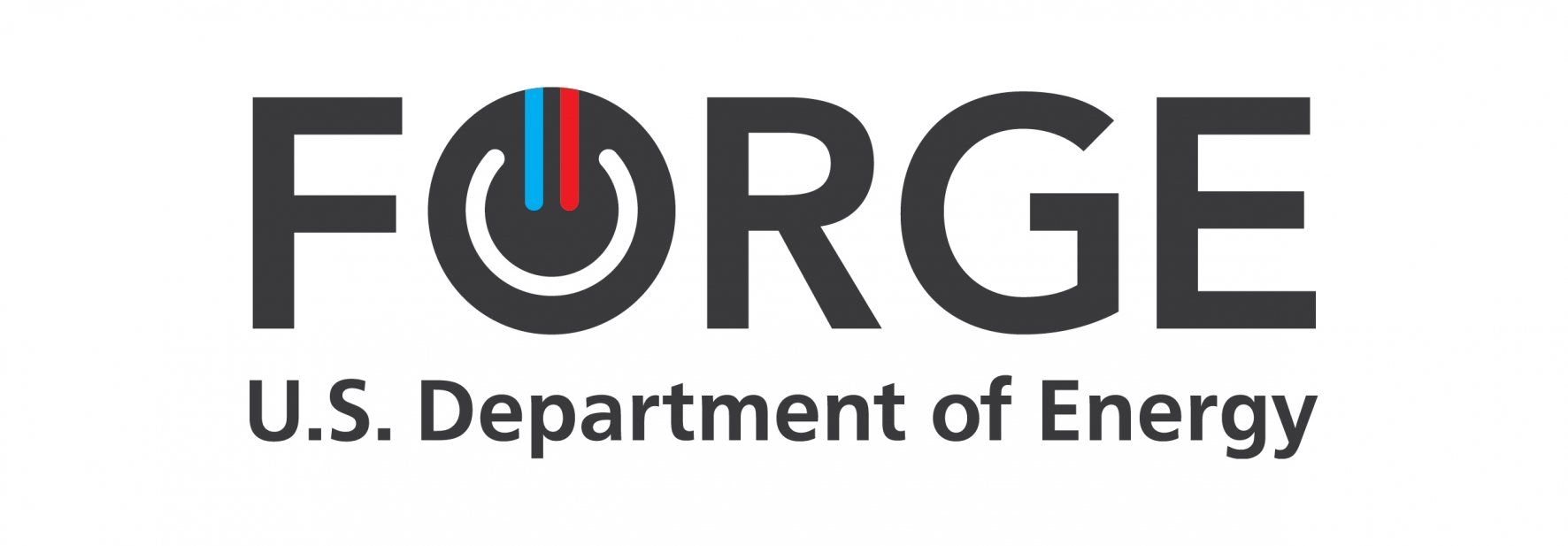Are you a student? Are you looking for opportunities to gain experience and build your resume? Do you want to win some money? Then the Geothermal Student Competition is for you!
In January 2019, the Geothermal Technologies Office (GTO) will announce a competition focused on data-driven analytics, data visualization, and subsurface science. Graduate, undergraduate, and high school students will be tasked with creating portfolios of graphics, visual representations, and visual analyses of data from the Frontier Observatory for Research in Geothermal Energy (FORGE) – GTO’s flagship initiative that serves as a field laboratory site where scientists and researchers can learn how to engineer enhanced geothermal systems (EGS).
Conventional geothermal resources are found where fluid, heat, and permeability naturally occur together underground. At these locations, we can build power plants and generate electricity. As you can imagine, these locations, and thus conventional geothermal resources, are relatively rare.
Emerging technologies are trying to change this. EGS are man-made geothermal reservoirs that can be engineered anywhere. By just adding a little water and permeability to hot rocks, which are almost everywhere at depth, geothermal energy would no longer rely on naturally occurring, relatively rare conditions. EGS could significantly expand geothermal energy production and potentially provide up to 100 gigawatts (GW) of electricity, allowing geothermal to be major contributor to the nation’s energy portfolio.
GTO launched the FORGE initiative to advance EGS technologies, which is research based but also emphasizes education and outreach. The compelling research being done at FORGE – along with its publicly available data, community-driven road-mapping, and numerous players and opportunities orbiting the site – can excite students about possibilities of EGS, geothermal, and green energy in general.
GTO is sponsoring the Geothermal Student Competition to further engage students. Participants will use FORGE data and some of the latest data visualization software to tell a story about EGS, exposing them to geothermal technologies, as well as the value of scientific communications and citizen science. The student competition is one way FORGE can be used as a platform to broaden the geothermal community’s stakeholder base, recruit a potential workforce, and inspire a new generation of scientists and energy consumers.
The FORGE site in Milford, Utah has already launched some fantastic STEM opportunities including:
In January 2019, the Geothermal Technologies Office (GTO) will announce a competition focused on data-driven analytics, data visualization, and subsurface science. Graduate, undergraduate, and high school students will be tasked with creating portfolios of graphics, visual representations, and visual analyses of data from the Frontier Observatory for Research in Geothermal Energy (FORGE) – GTO’s flagship initiative that serves as a field laboratory site where scientists and researchers can learn how to engineer enhanced geothermal systems (EGS).
Conventional geothermal resources are found where fluid, heat, and permeability naturally occur together underground. At these locations, we can build power plants and generate electricity. As you can imagine, these locations, and thus conventional geothermal resources, are relatively rare.
Emerging technologies are trying to change this. EGS are man-made geothermal reservoirs that can be engineered anywhere. By just adding a little water and permeability to hot rocks, which are almost everywhere at depth, geothermal energy would no longer rely on naturally occurring, relatively rare conditions. EGS could significantly expand geothermal energy production and potentially provide up to 100 gigawatts (GW) of electricity, allowing geothermal to be major contributor to the nation’s energy portfolio.
GTO launched the FORGE initiative to advance EGS technologies, which is research based but also emphasizes education and outreach. The compelling research being done at FORGE – along with its publicly available data, community-driven road-mapping, and numerous players and opportunities orbiting the site – can excite students about possibilities of EGS, geothermal, and green energy in general.
GTO is sponsoring the Geothermal Student Competition to further engage students. Participants will use FORGE data and some of the latest data visualization software to tell a story about EGS, exposing them to geothermal technologies, as well as the value of scientific communications and citizen science. The student competition is one way FORGE can be used as a platform to broaden the geothermal community’s stakeholder base, recruit a potential workforce, and inspire a new generation of scientists and energy consumers.
The FORGE site in Milford, Utah has already launched some fantastic STEM opportunities including:
- geothermal educational seminars – training undergraduate outreach mentors about the FORGE project in preparation for outreach trips to Milford for K-12 and university students;
- geothermal field trips to the FORGE site;
- hands-on experiments for middle school and high school students demonstrating hydraulic fracturing and permeability; and
- Educational toolkits for teachers that include lesson plans, experiments, and FAQs.
